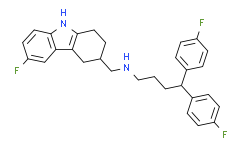
购物车0
产品总数:60942


| 商品编号 | 规格 | 价格 | 会员价 | 是否有货 | 数量 |
|---|---|---|---|---|---|
| PL08750-5mg | 5mg | ¥1854.55 | 请登录 |
|
|
| PL08750-10mg | 10mg | ¥3461.82 | 请登录 |
|
|
| PL08750-50mg | 50mg | ¥10509.09 | 请登录 |
|
|
| PL08750-100mg | 100mg | ¥16072.73 | 请登录 |
|
|
| PL08750-200mg | 200mg | 询价 | 询价 |
|
|
| PL08750-500mg | 500mg | 询价 | 询价 |
|
|
| PL08750-10mM*1mLinDMSO | 10mM*1mLinDMSO | ¥1891.64 | 请登录 |
|
 扫码关注公众号
扫码关注公众号